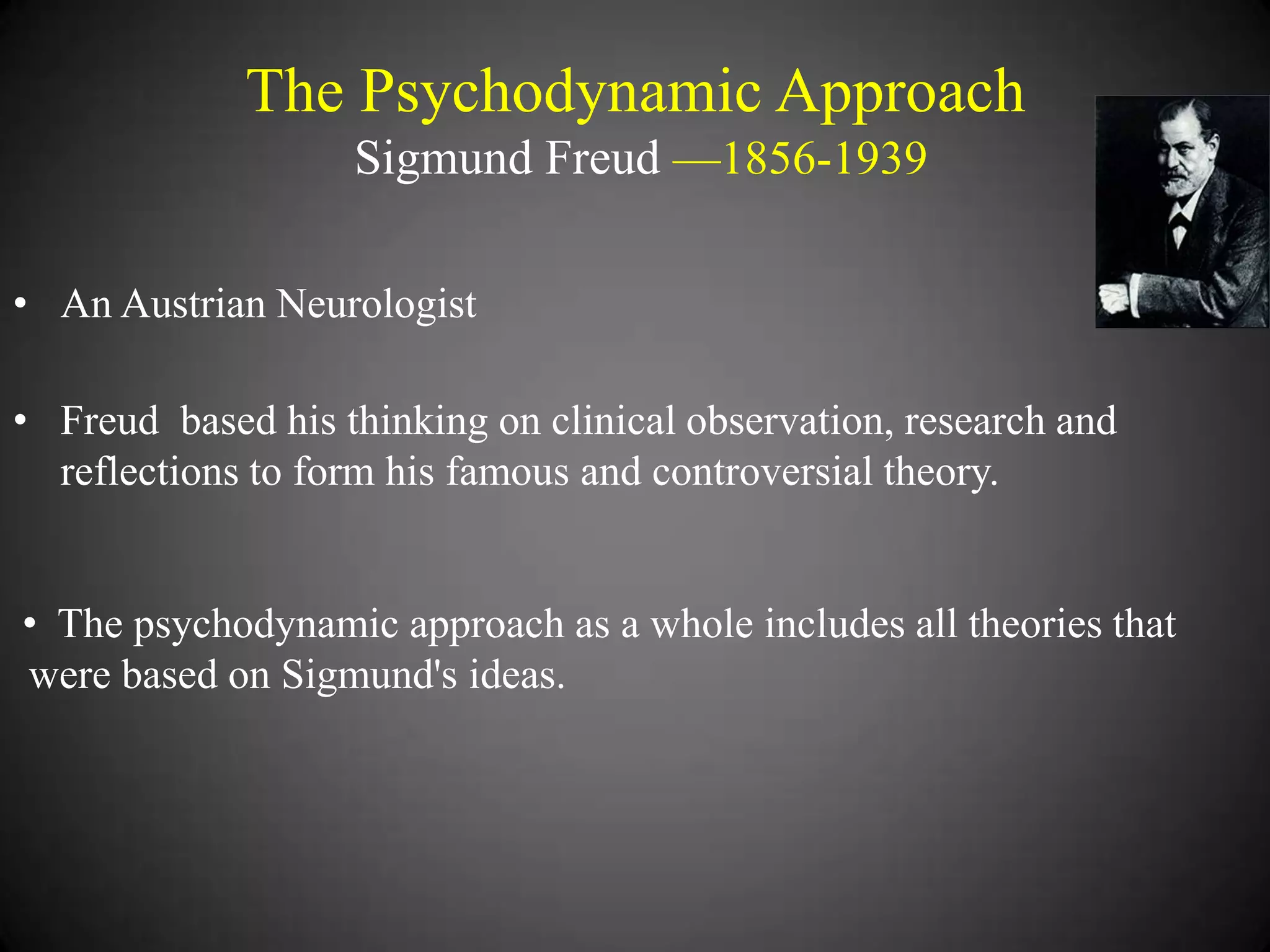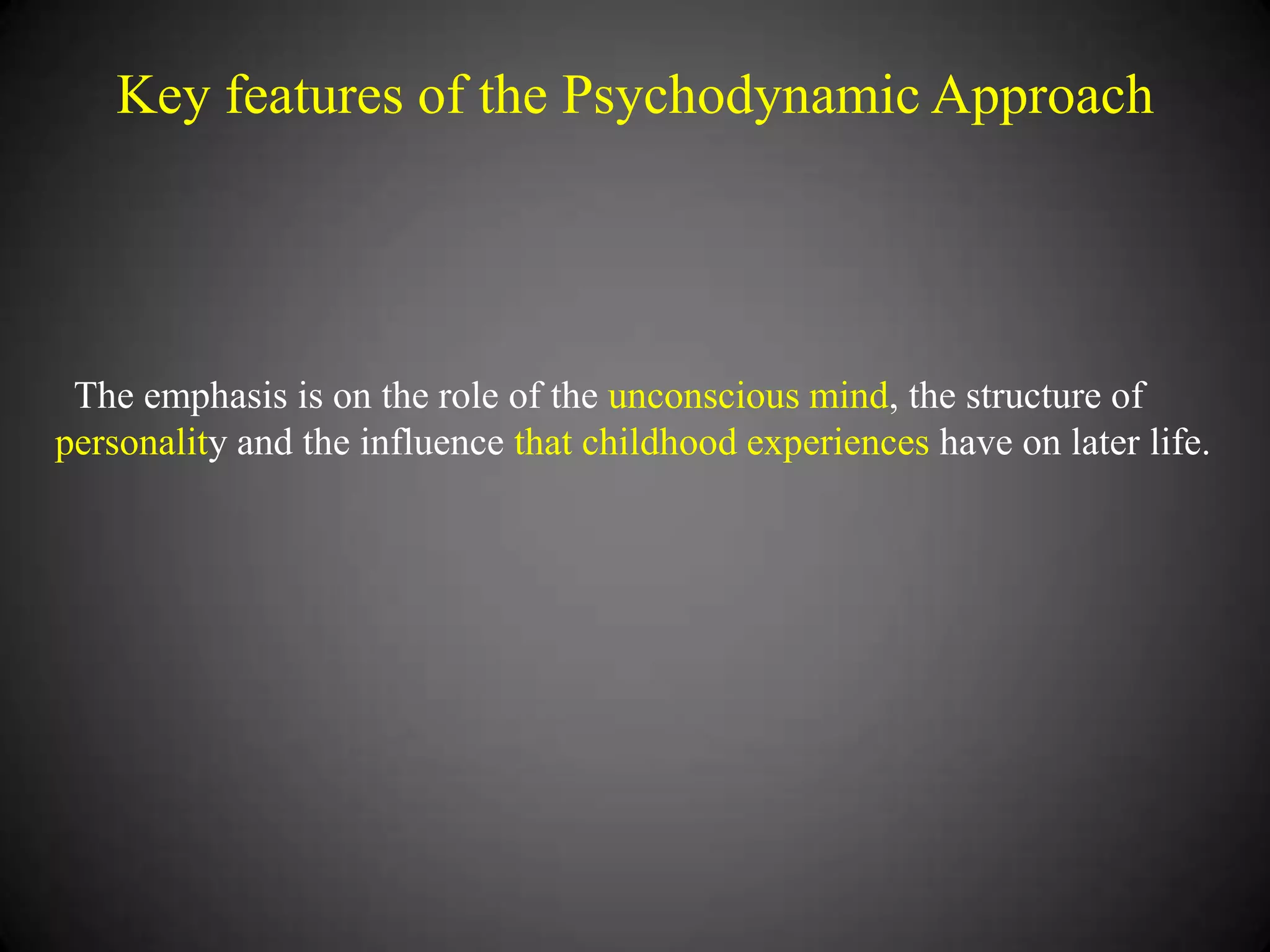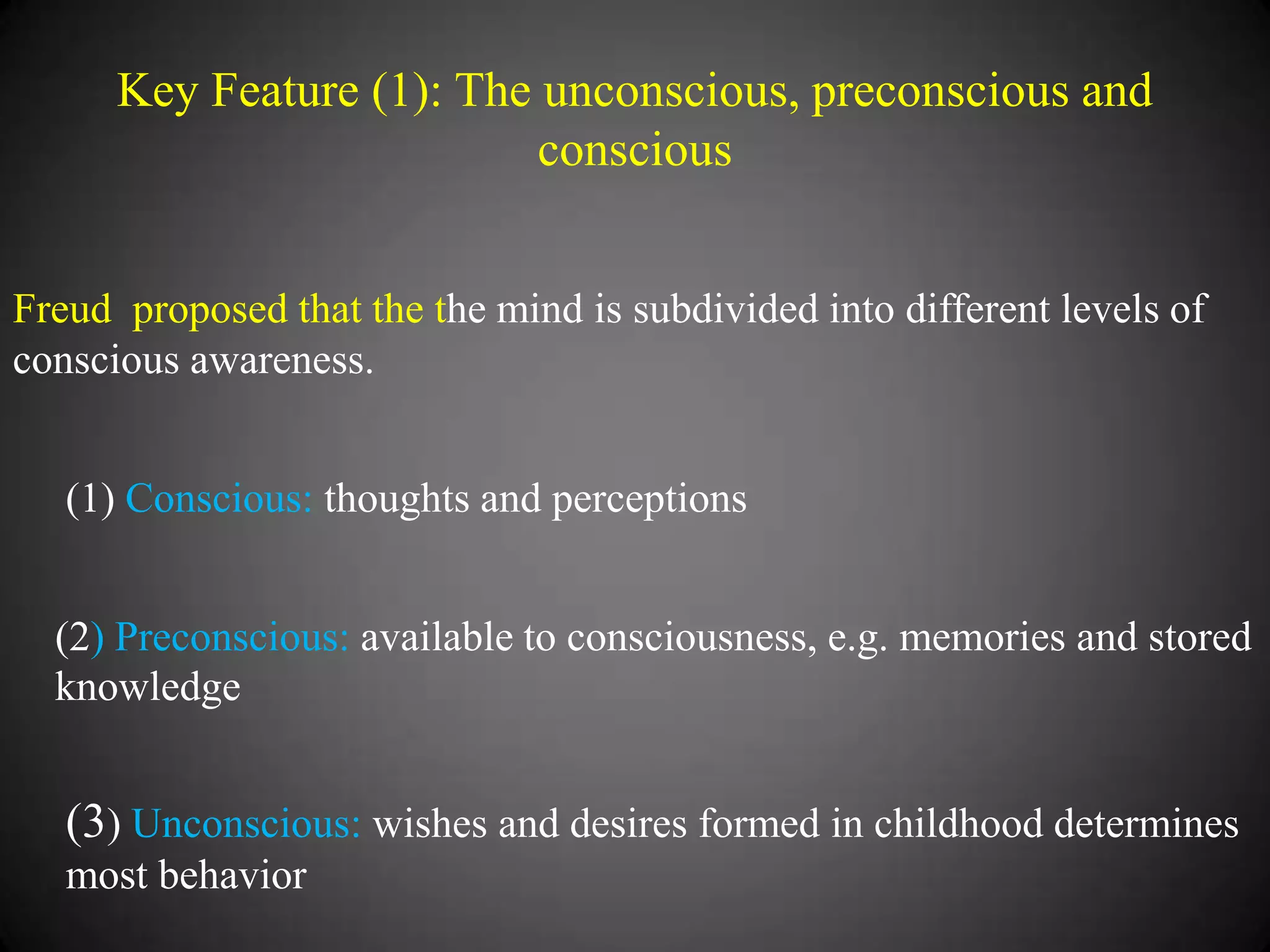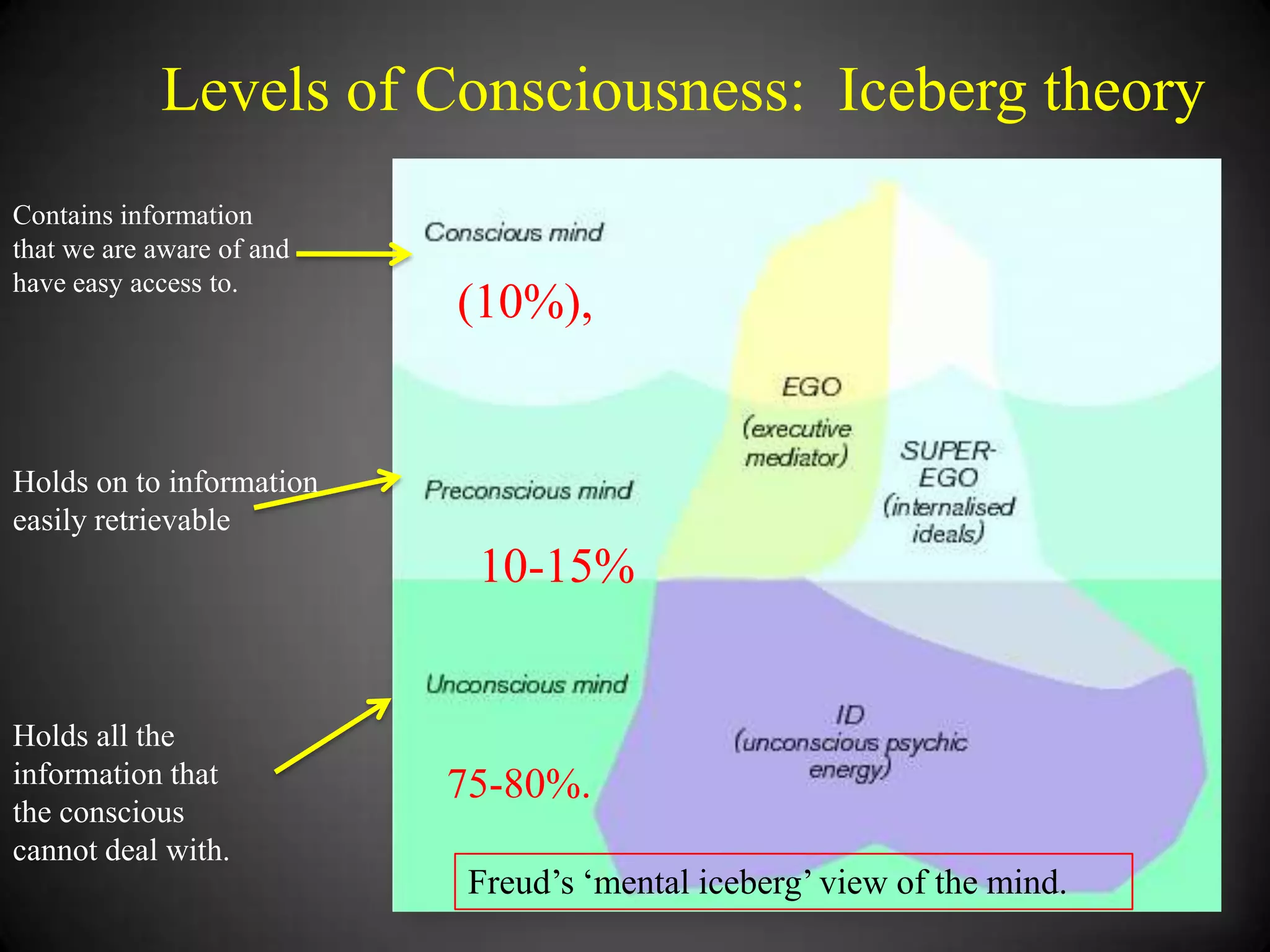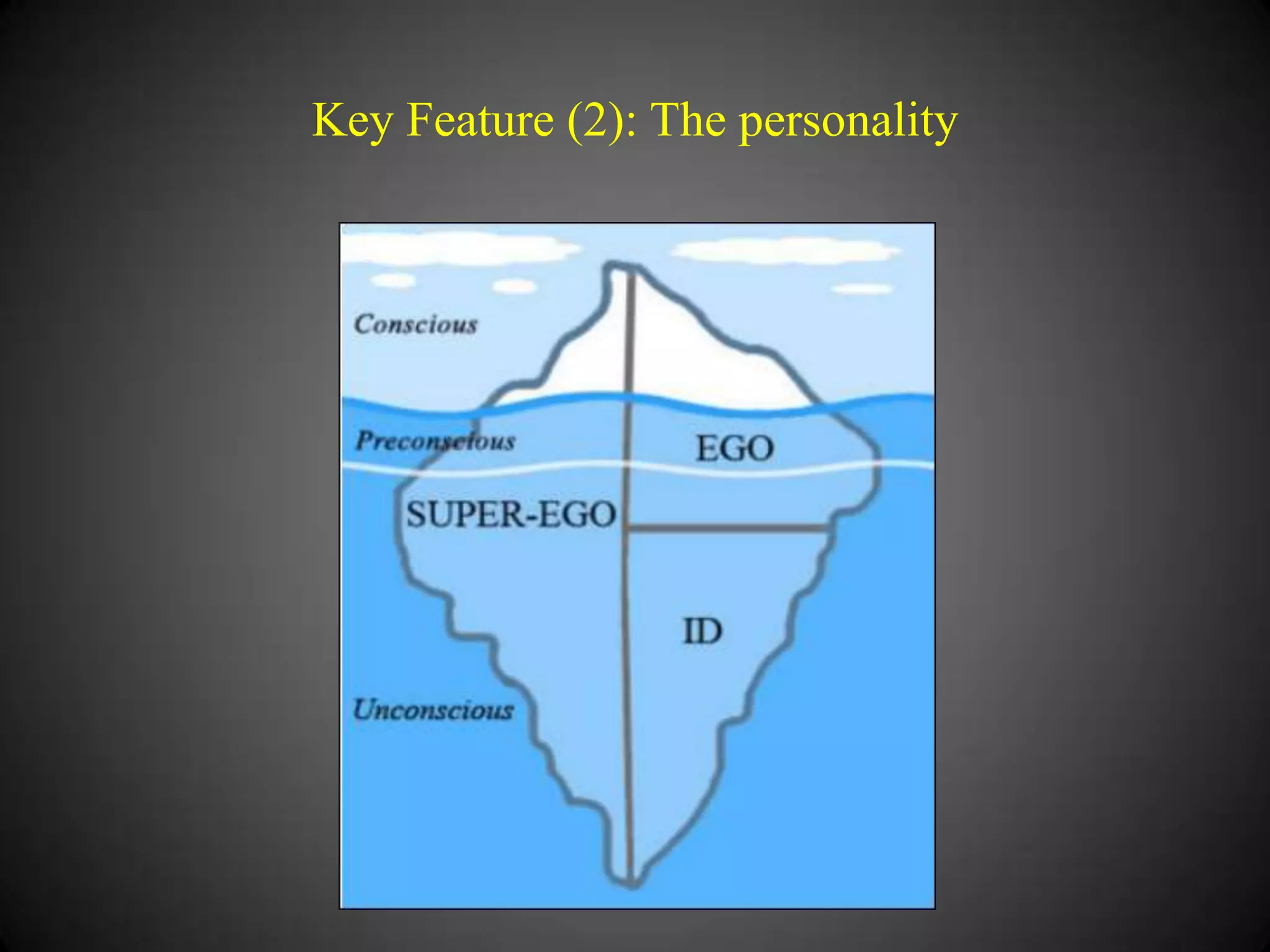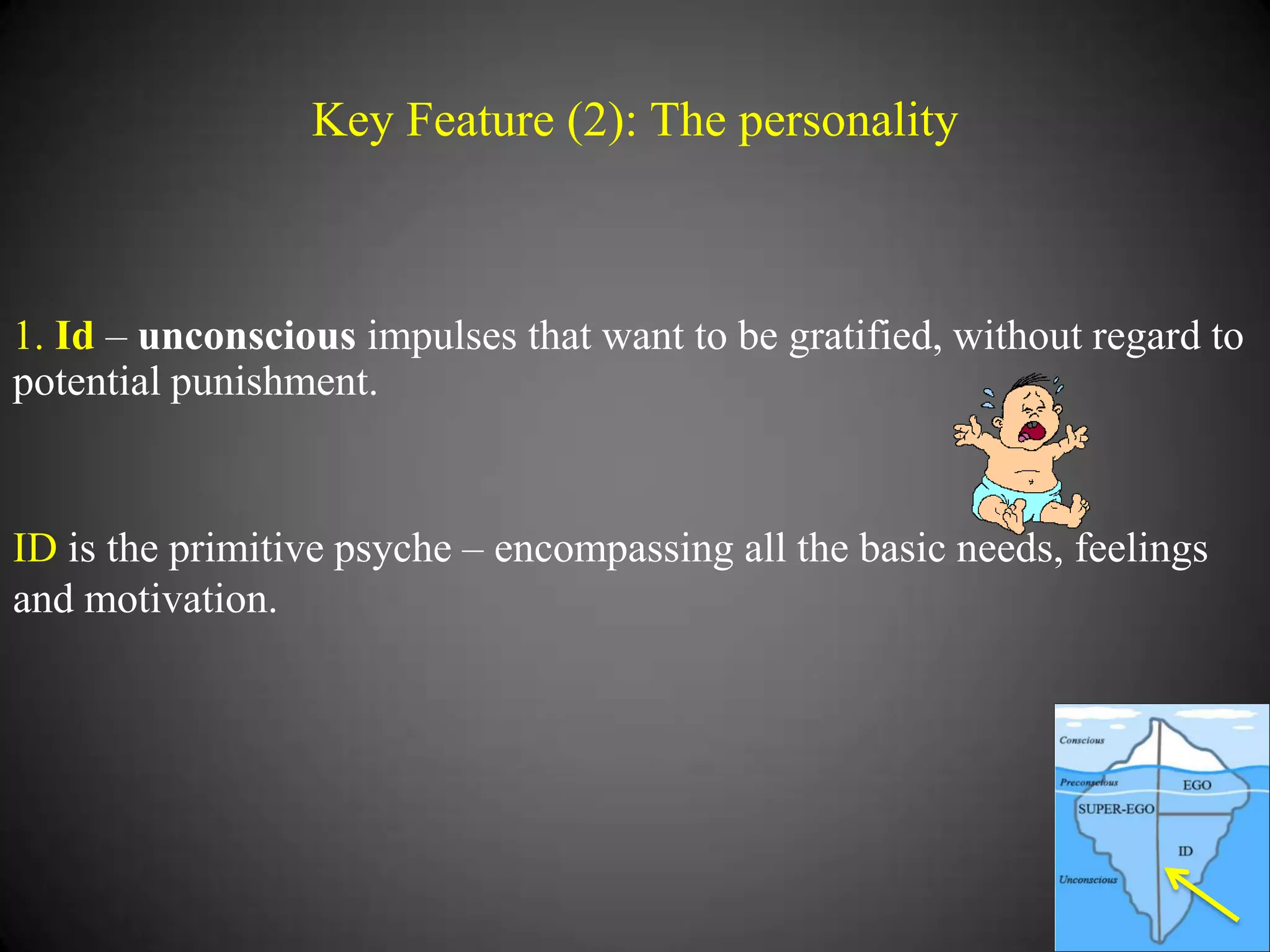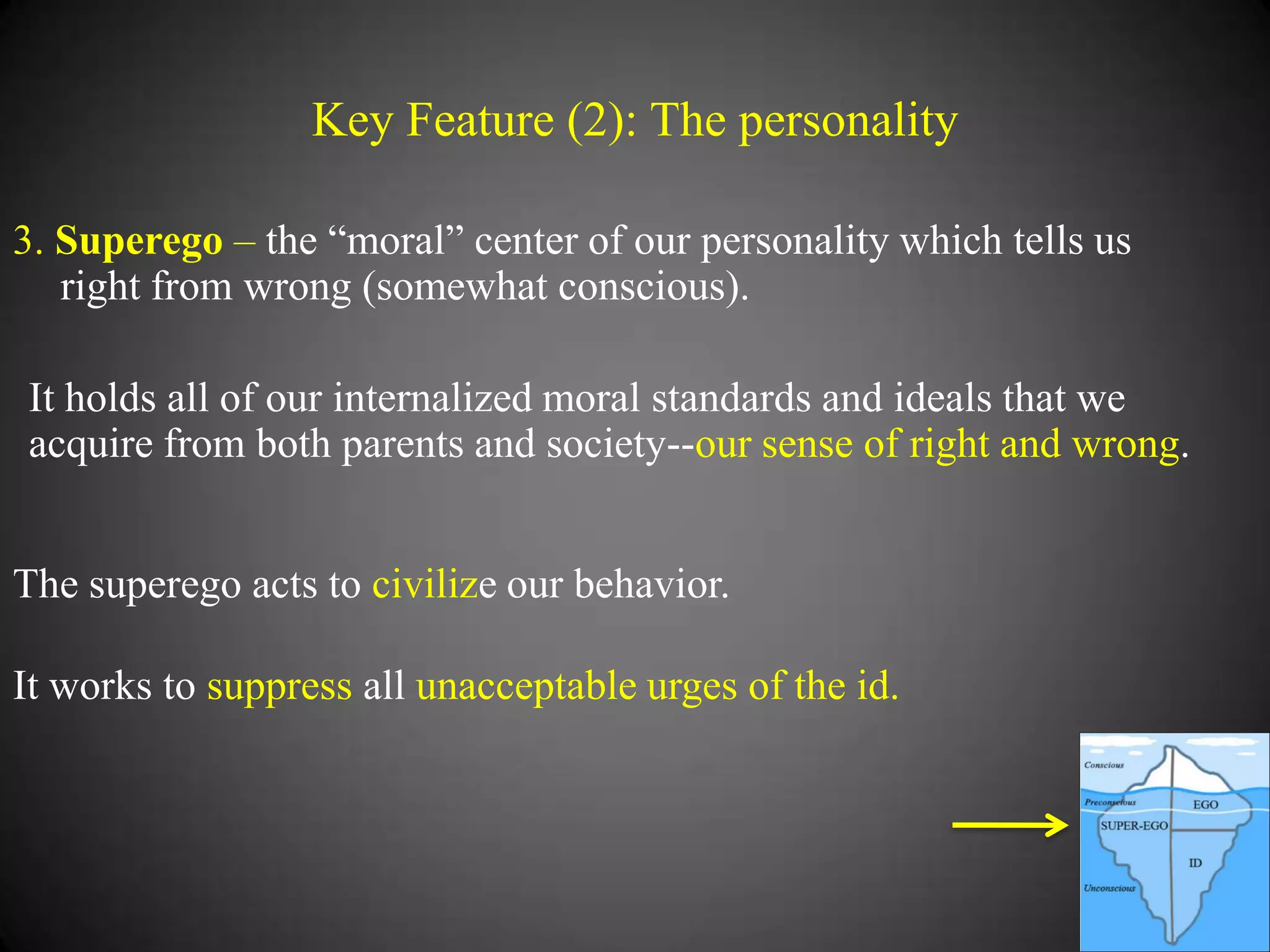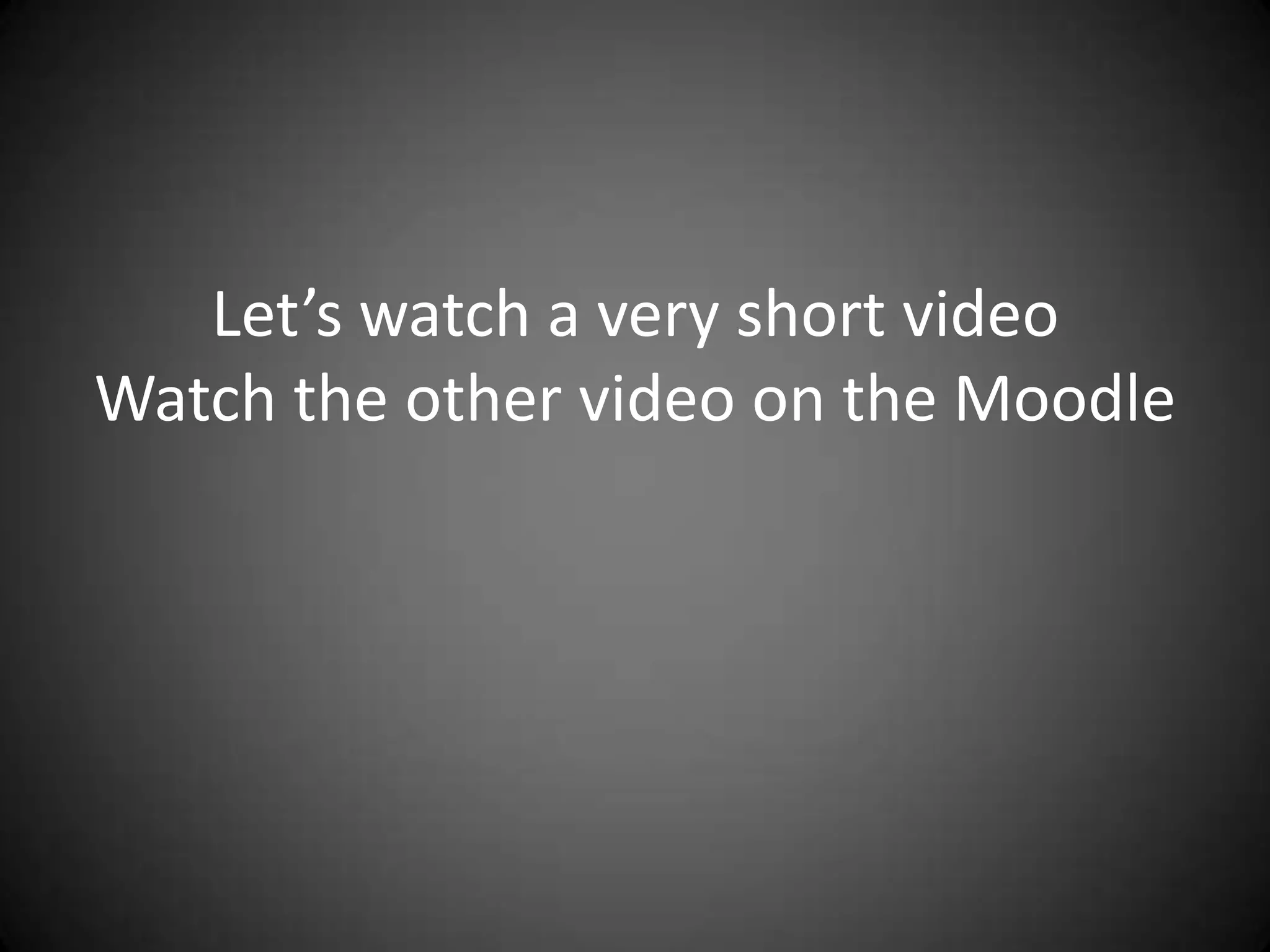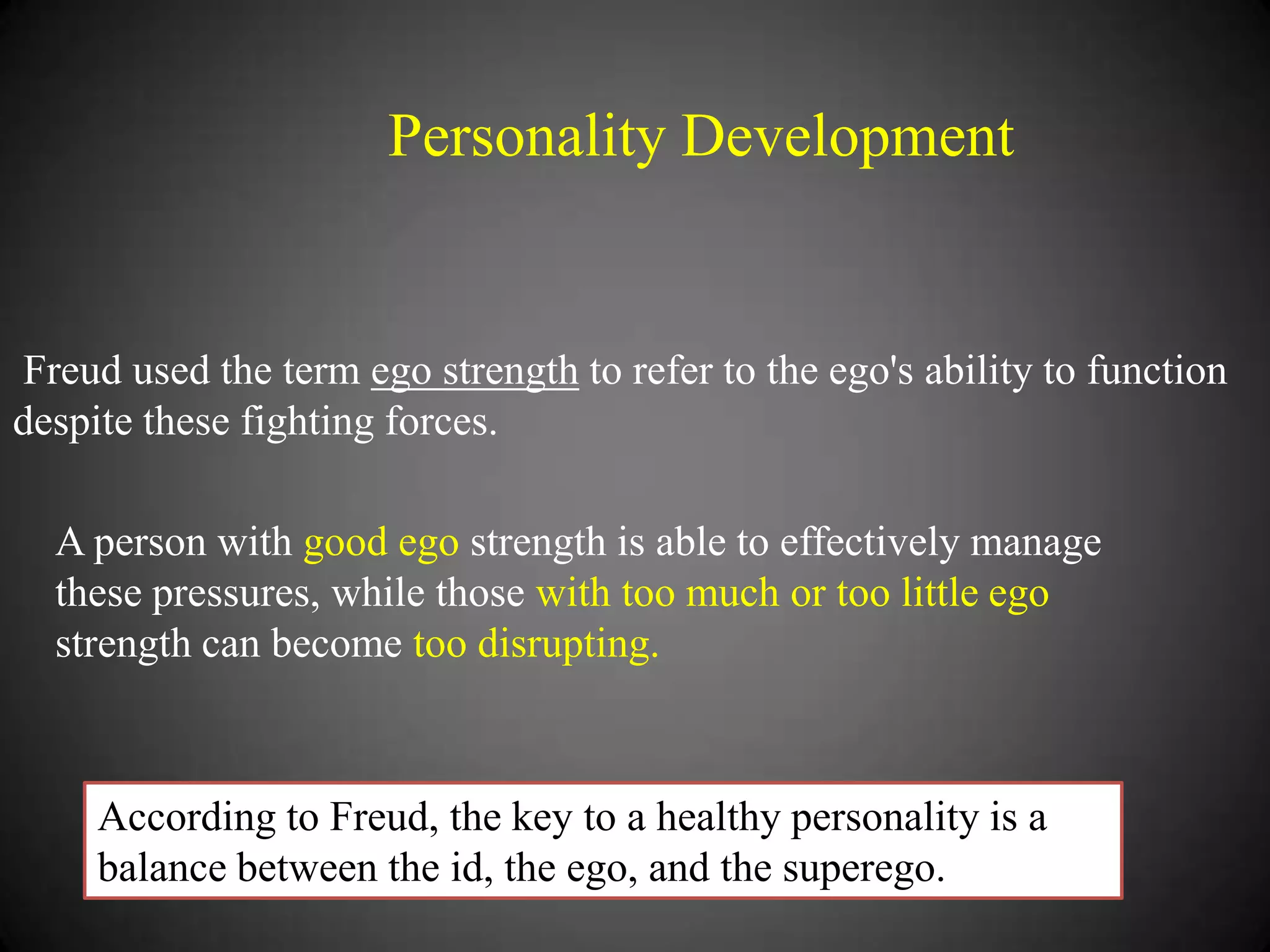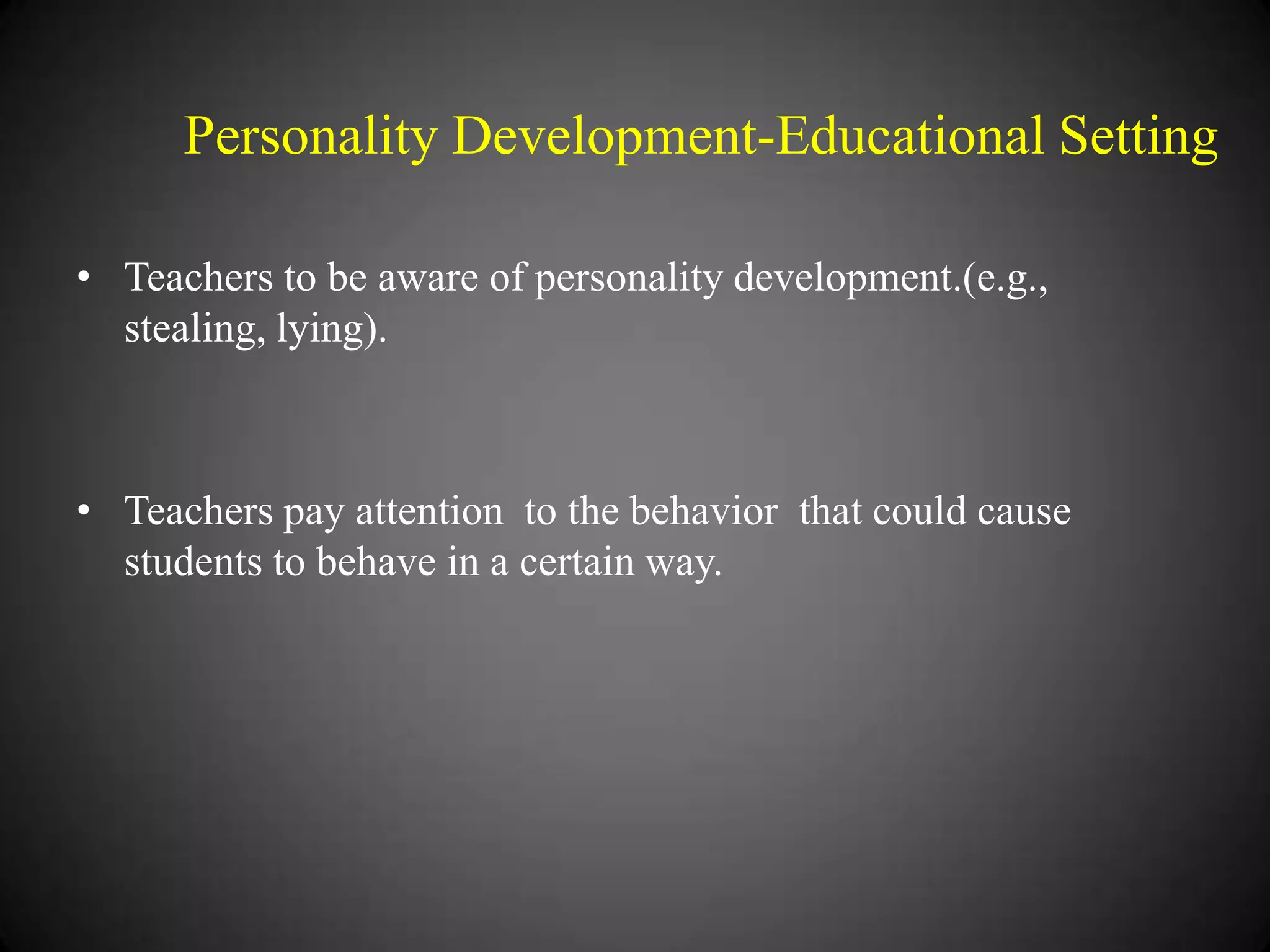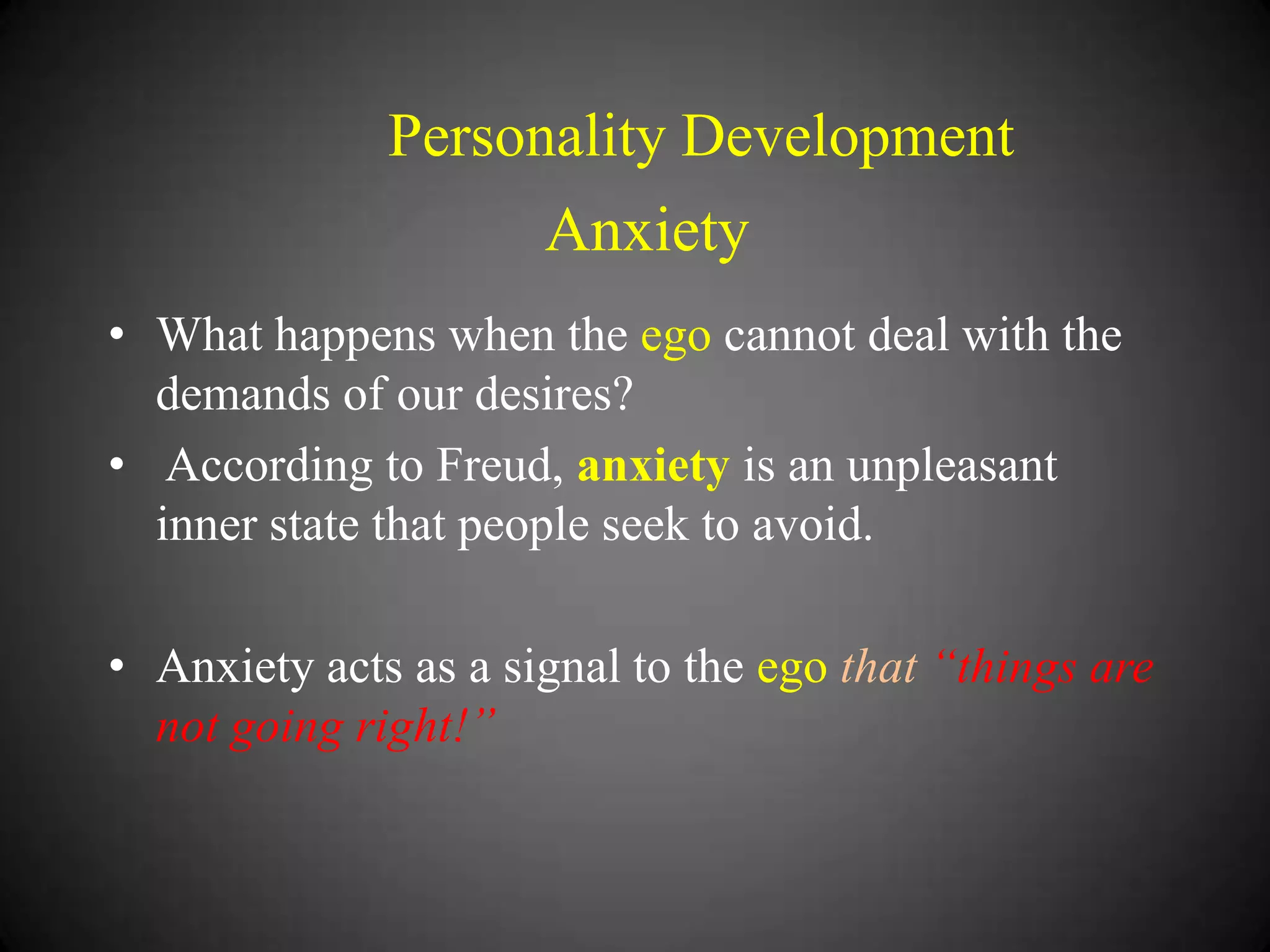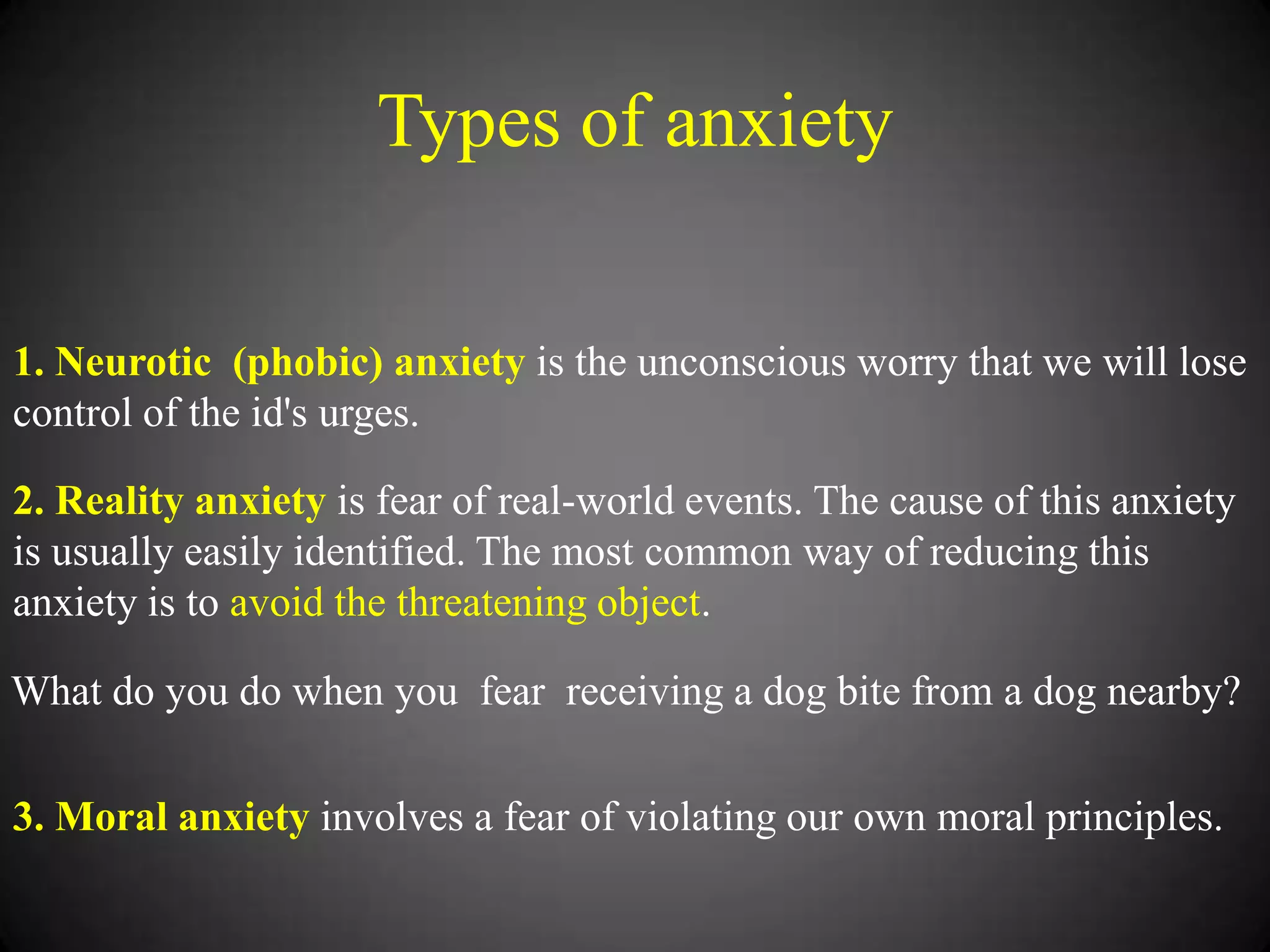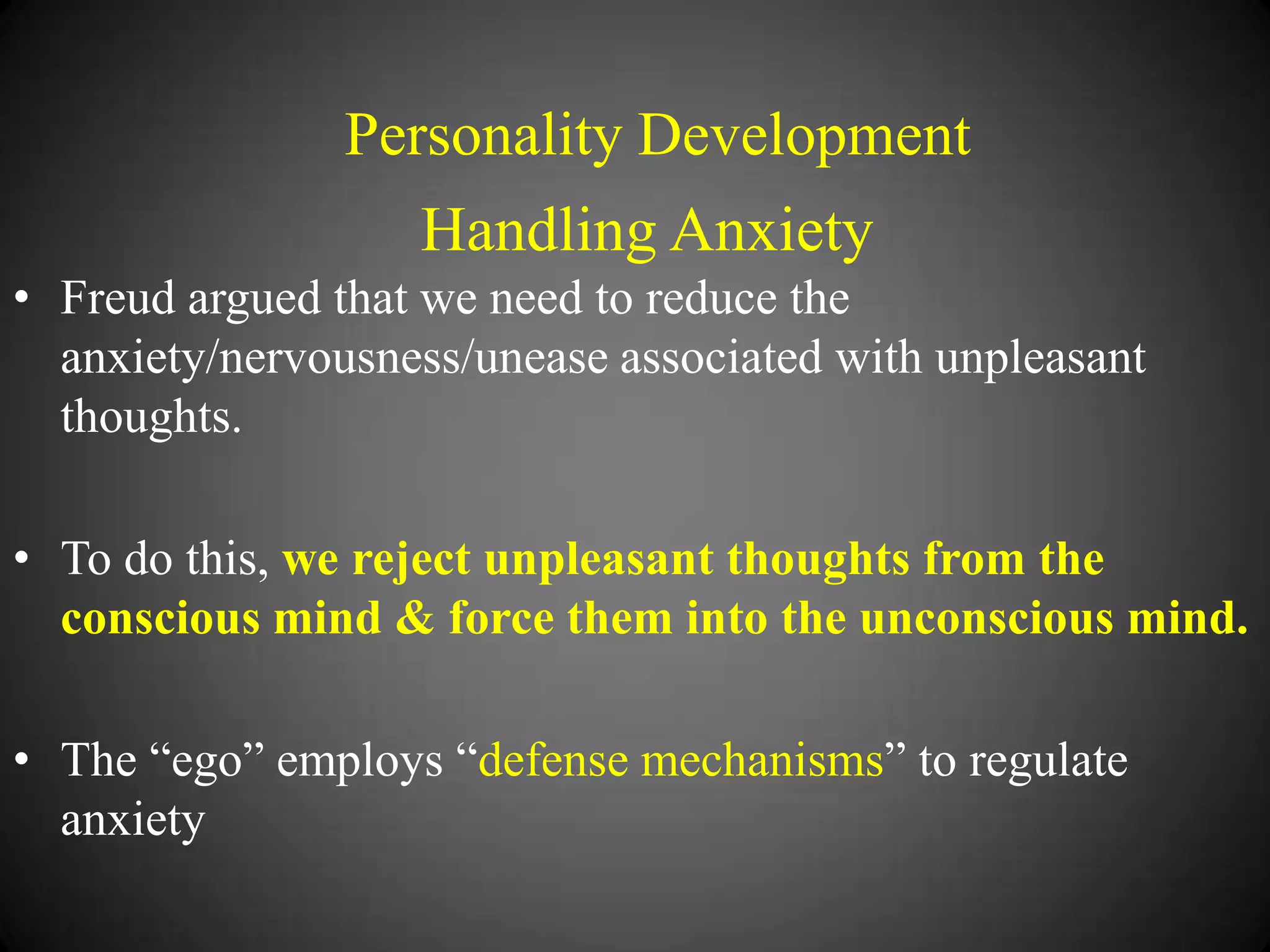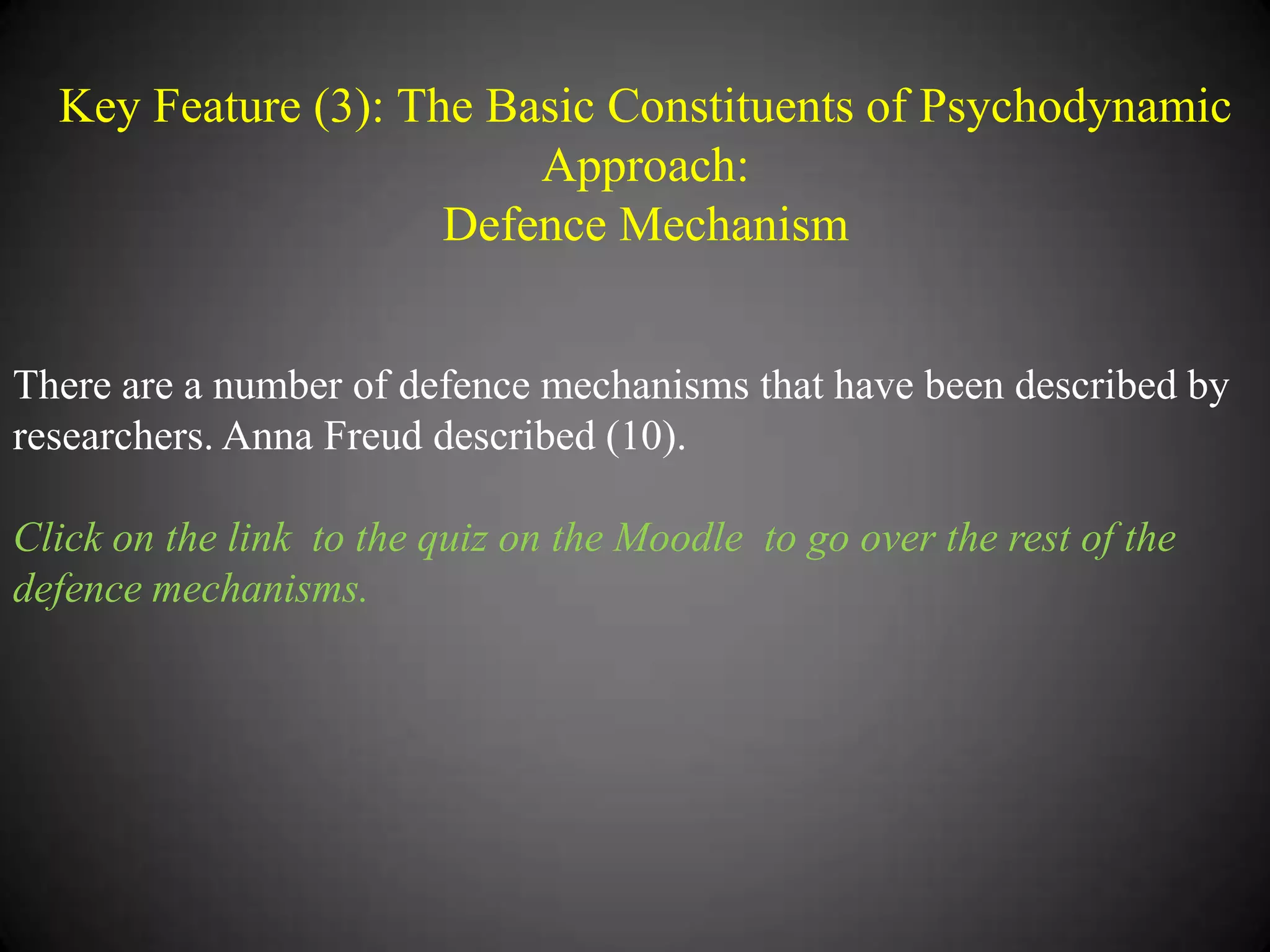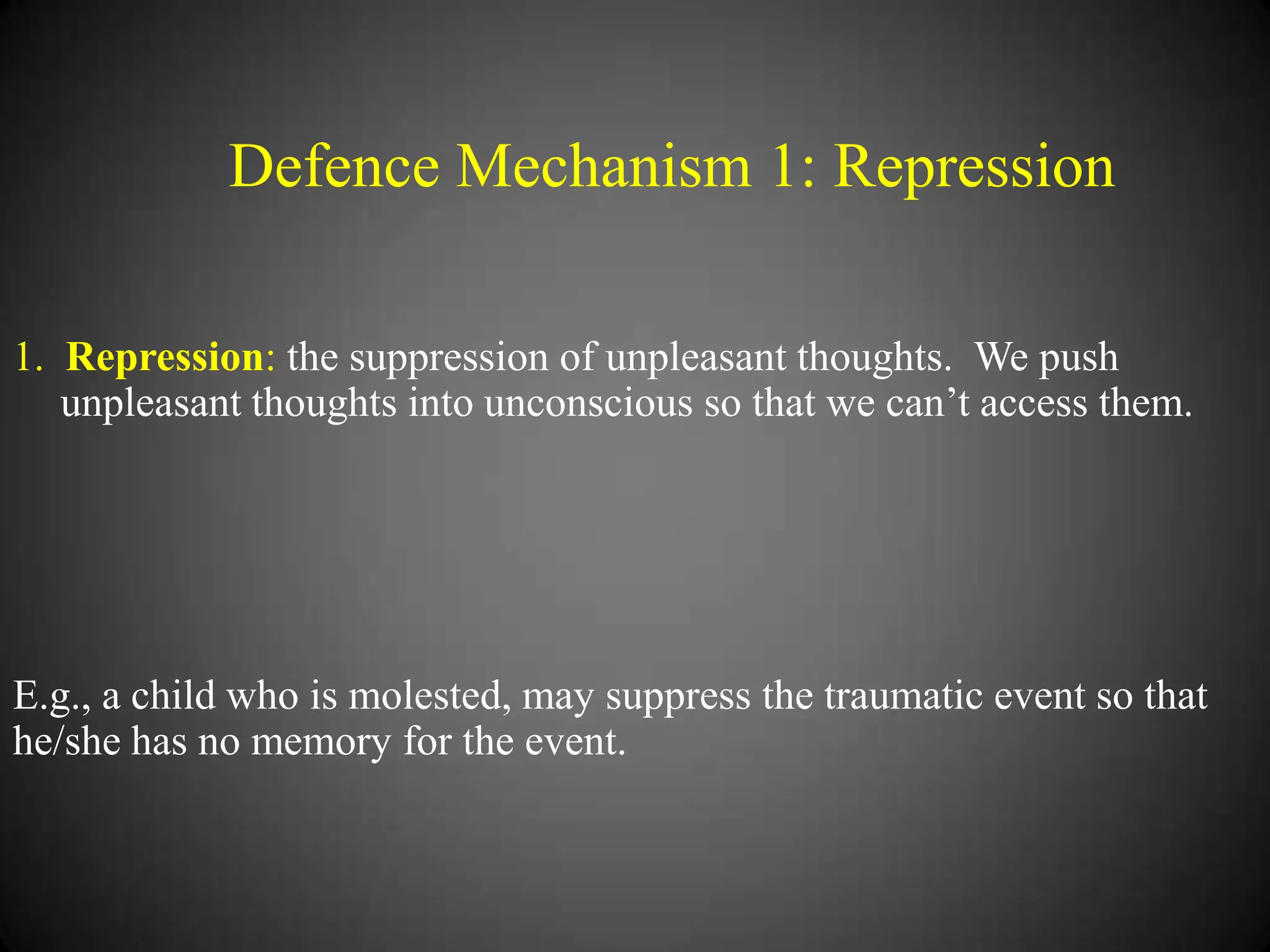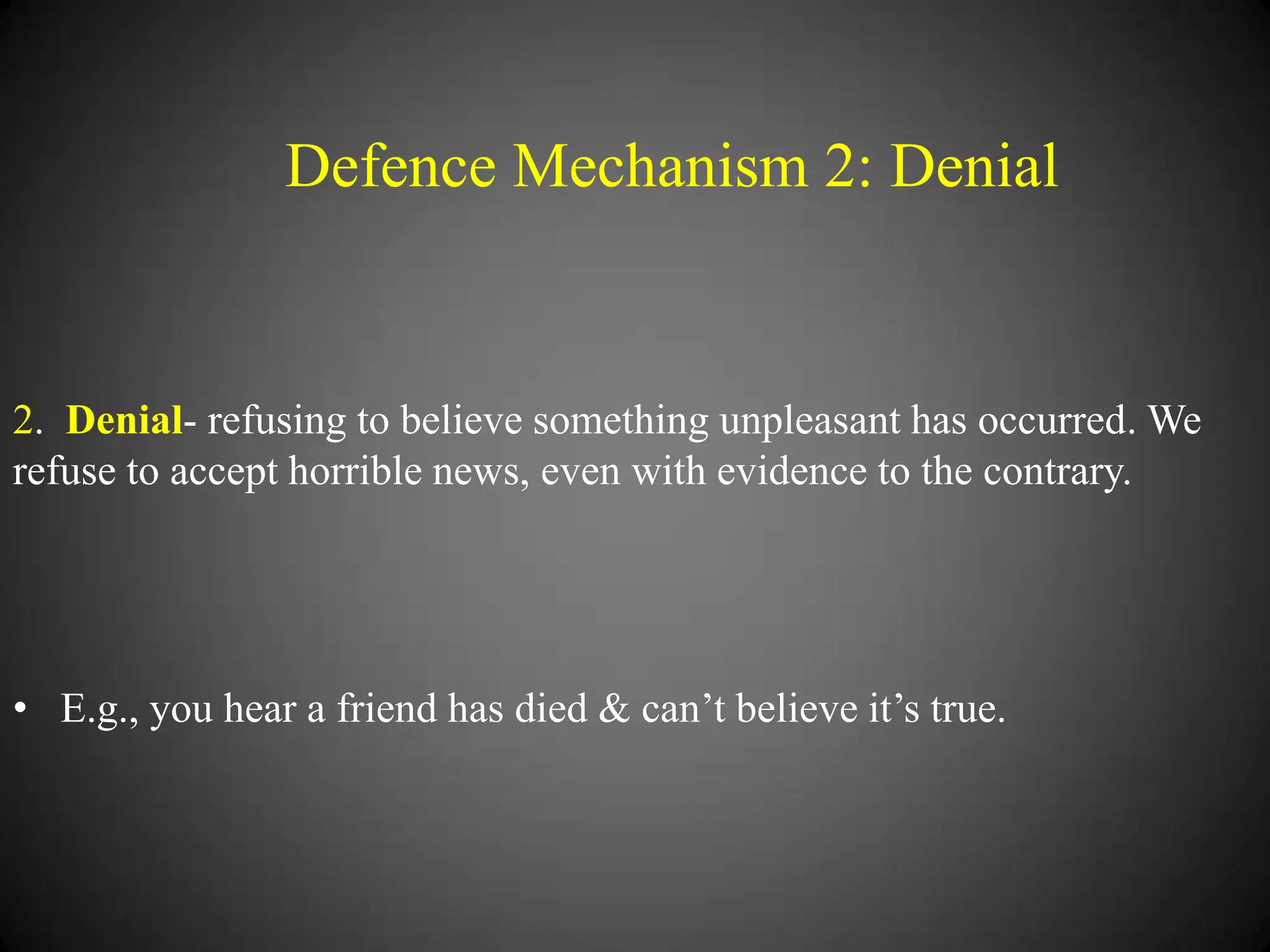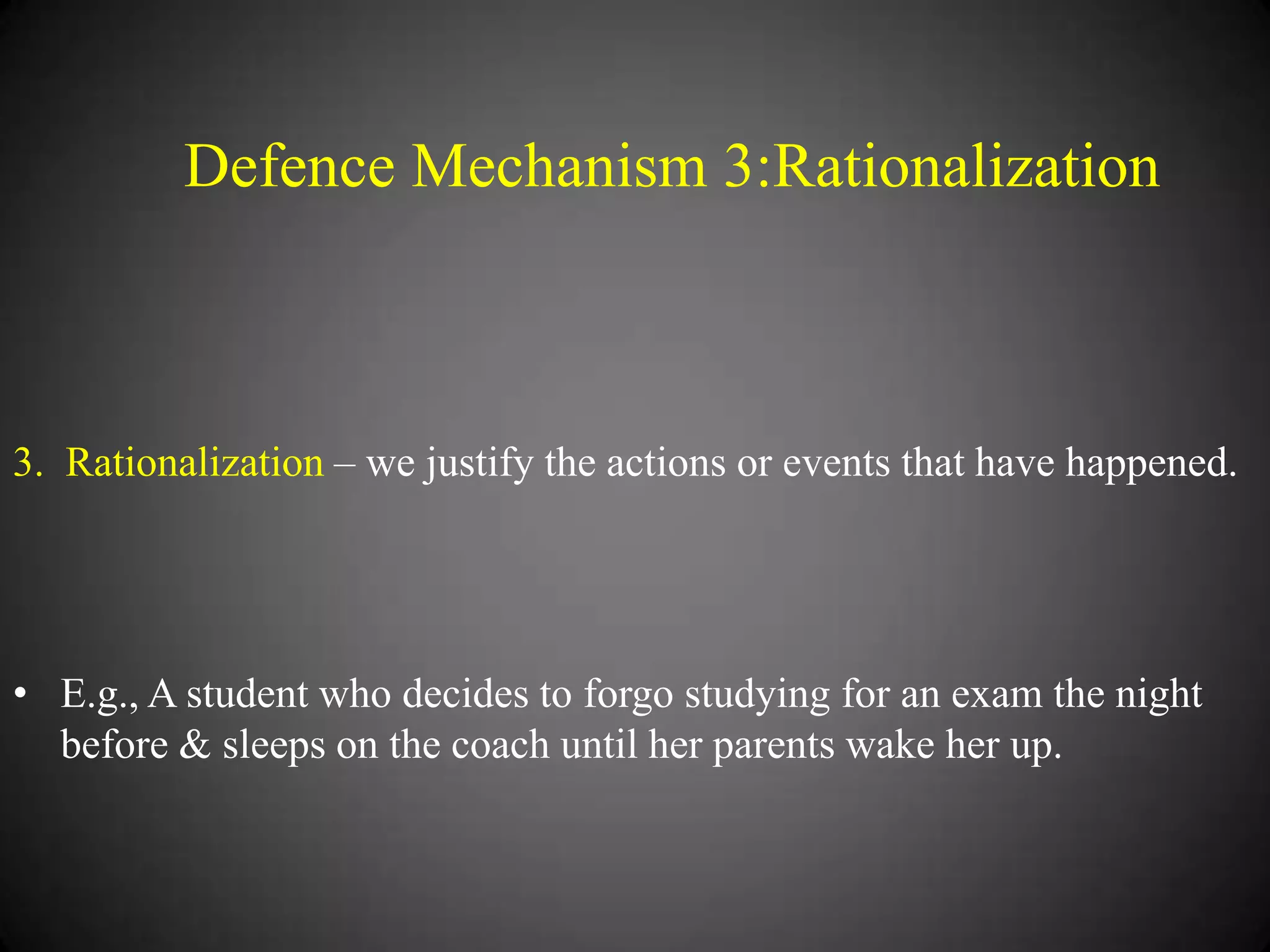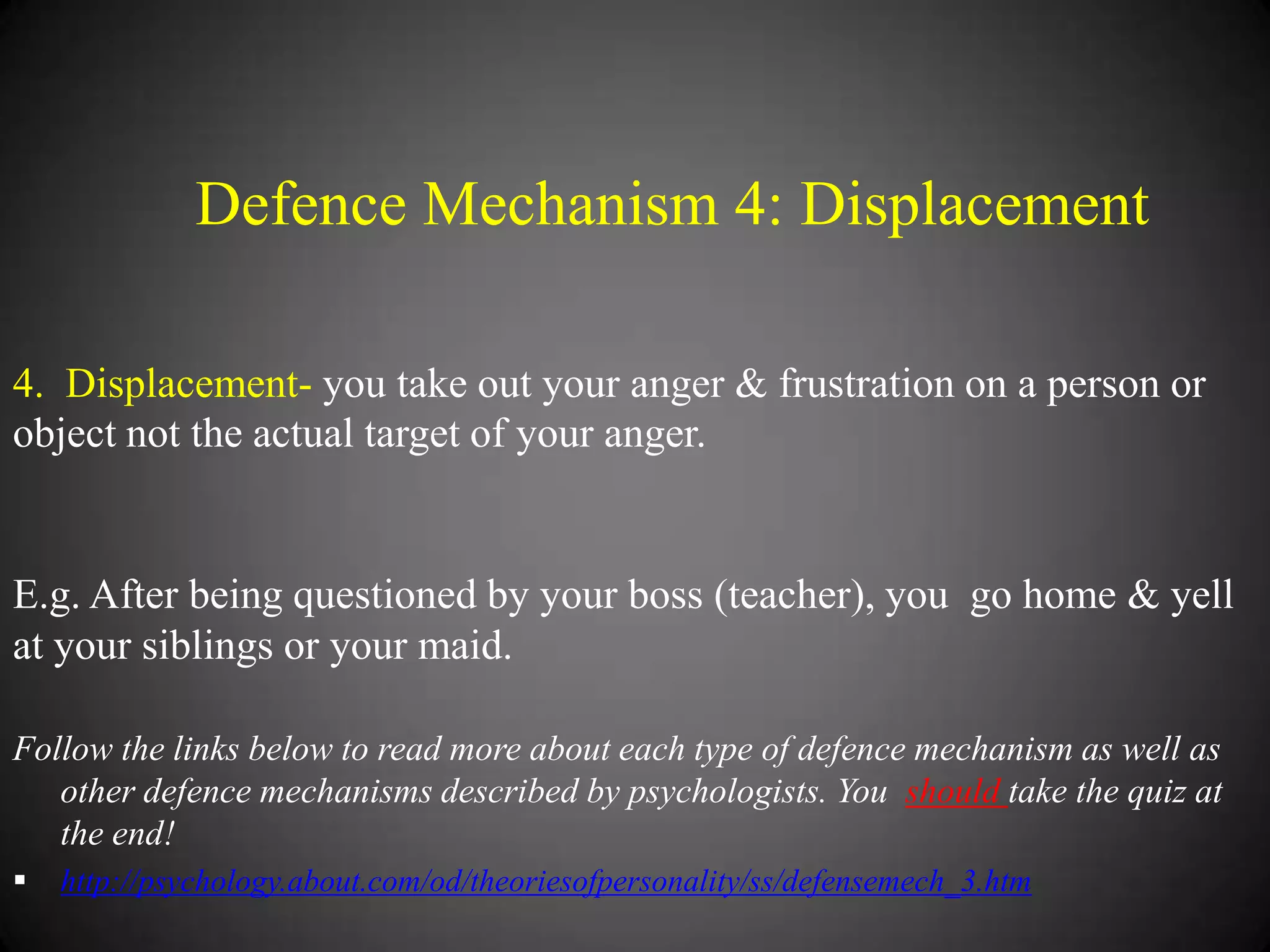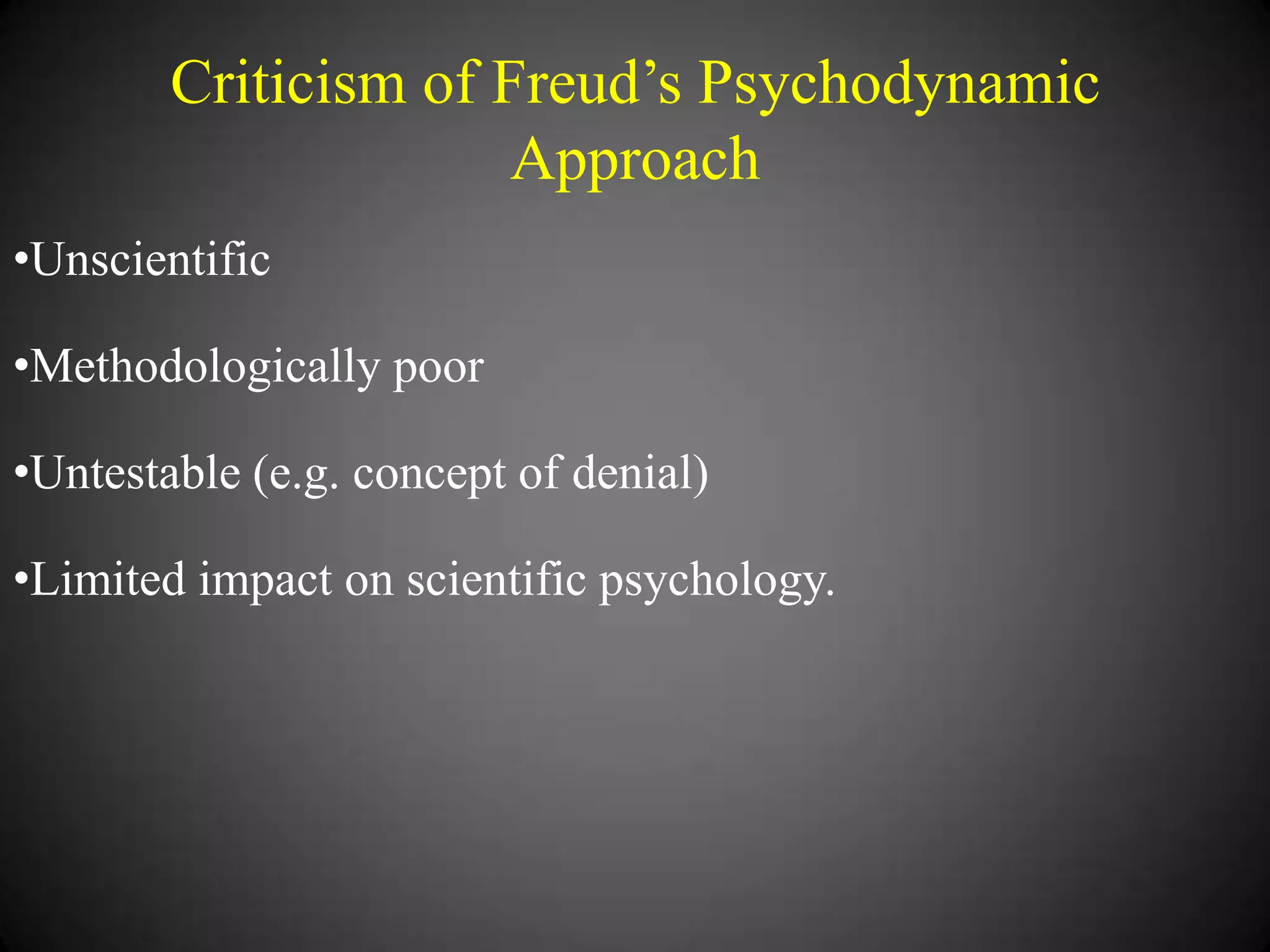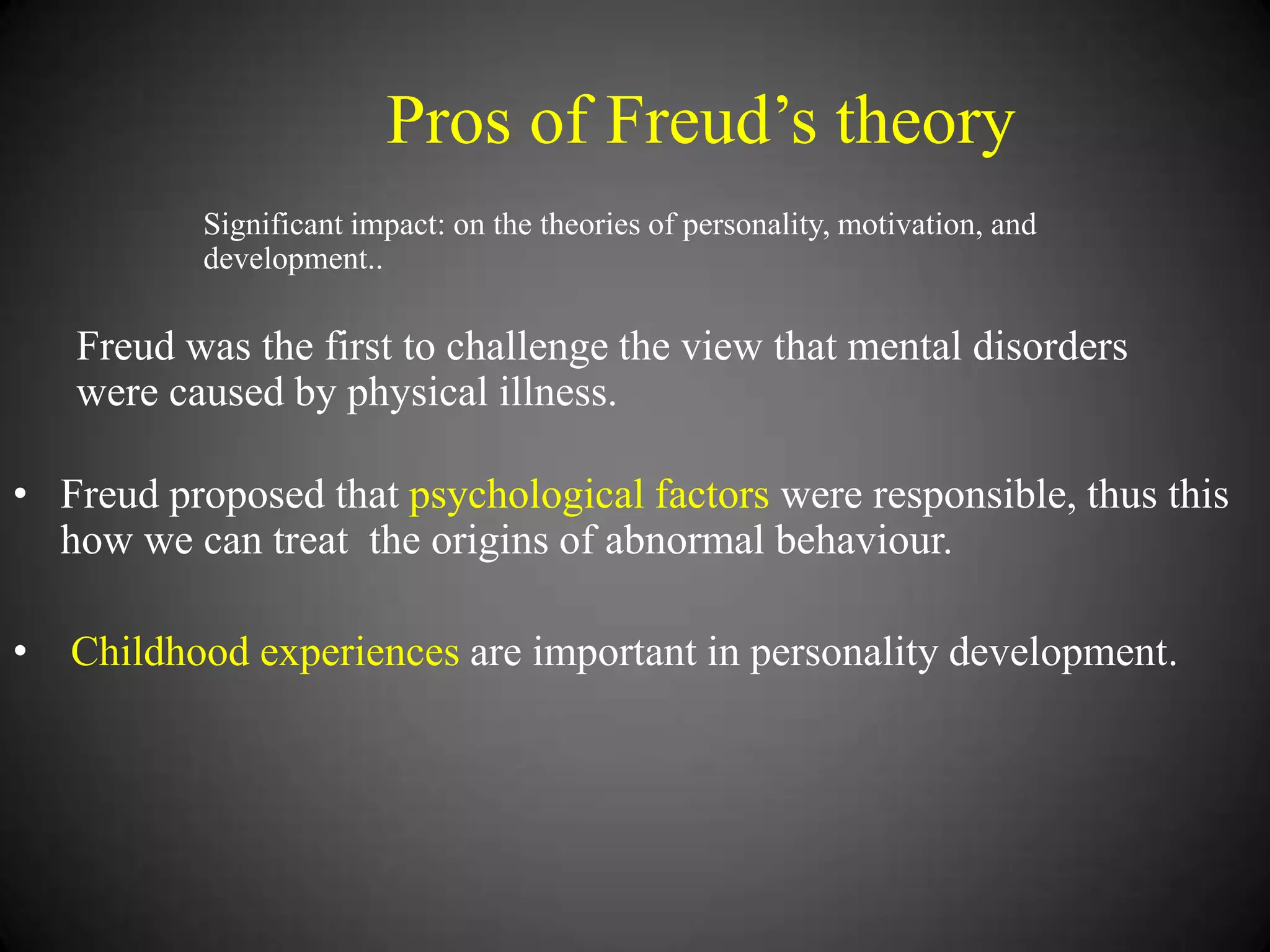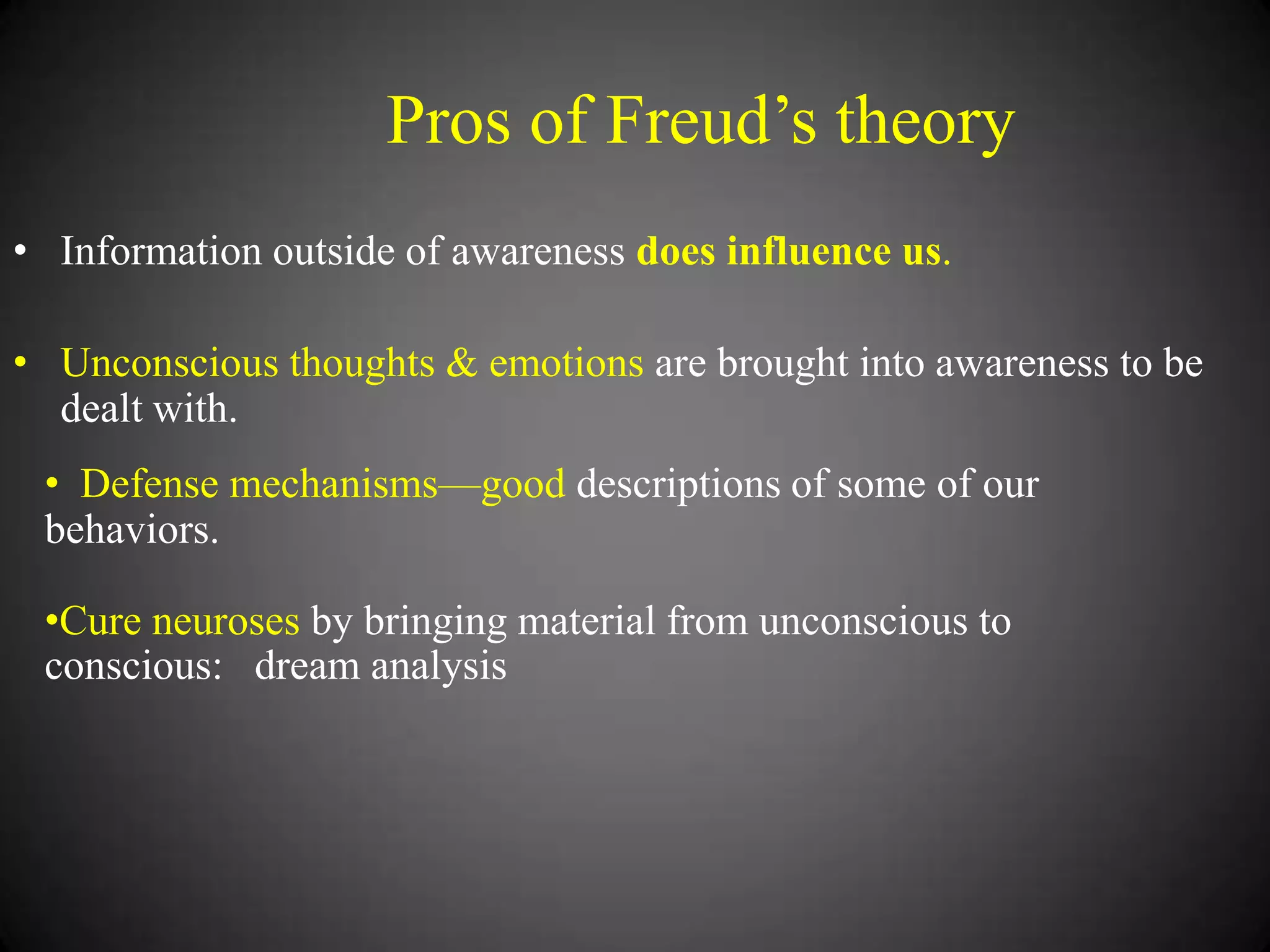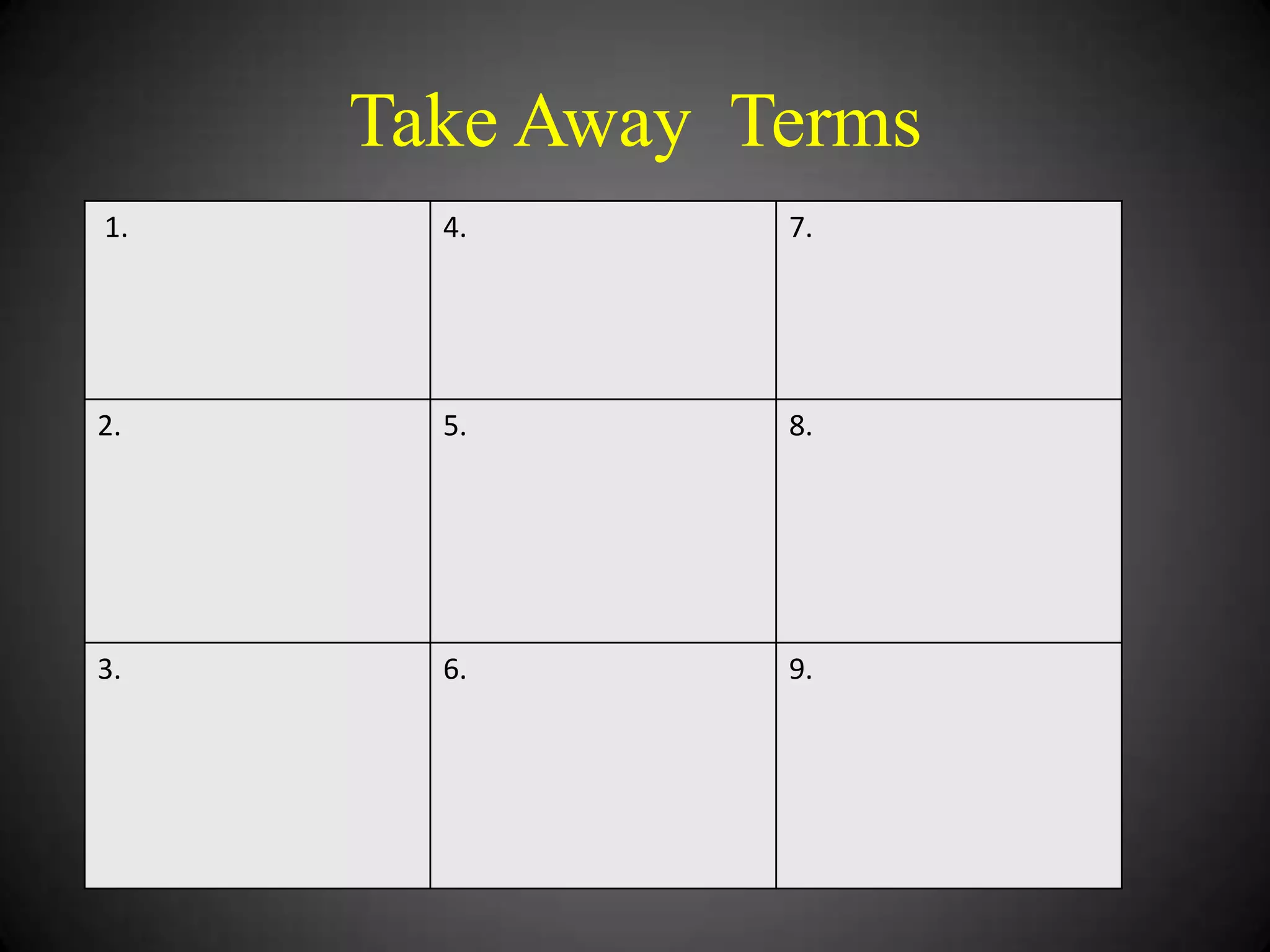Sigmund Freud developed the psychodynamic approach which views the mind as having three parts - the conscious, preconscious, and unconscious. The unconscious contains desires and wishes formed in childhood that influence behavior. Freud also proposed that personality has three components - the id, ego, and superego. The id contains urges for instant gratification, the ego mediates demands of the id and external reality, and the superego acts as the conscience. A key aspect is that childhood experiences influence later personality development and behavior. Defense mechanisms like repression and rationalization help reduce anxiety by regulating thoughts and impulses from entering consciousness. While criticized as unscientific, Freud's theory significantly impacted views of personality, motivation and development.

